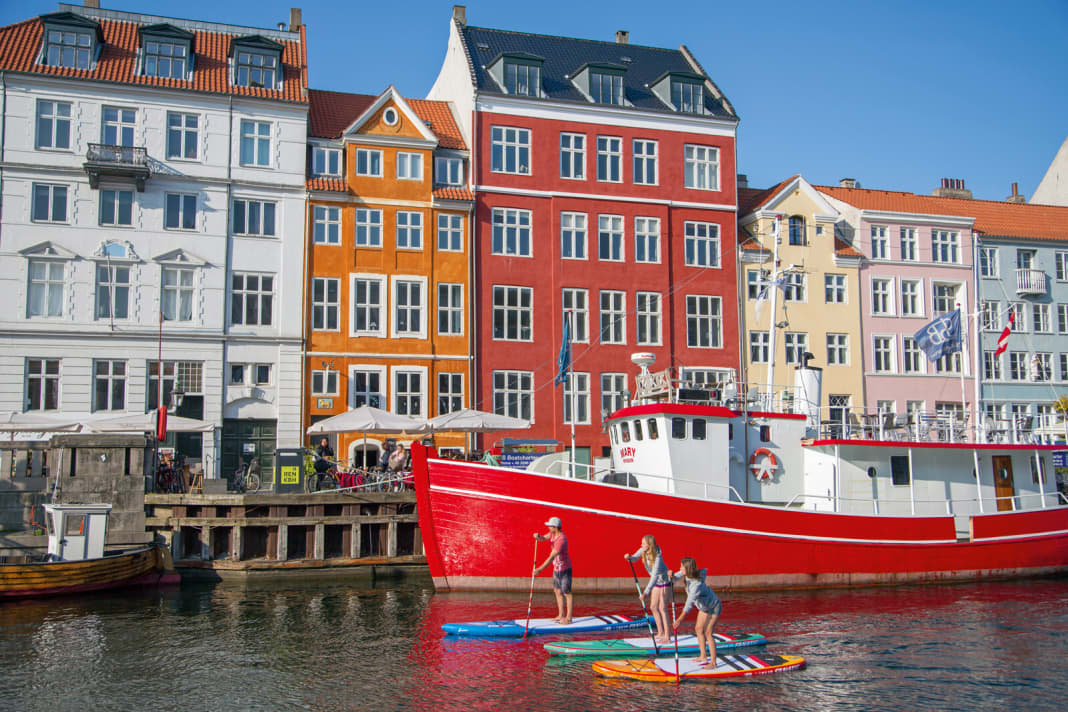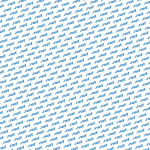"I know what we're going to do now, we're just going to the capital of the happiest people in the world!" Paulina announced euphorically one day. Youthful euphoria that is initially met with resistance. "Who and where is that supposed to be?" Phine wants to know, "the Australians? The Canadians?" That seemed far too far for a long weekend to Kai. "You're completely wrong, we can take the train straight there from Hamburg tomorrow morning. Via Fehmarn, then up onto the ferry and two hours later we'll be at our destination: Copenhagen Central Station." "The Danes!" it dawns on Phine. She had recently read: "They are not only happy, but also honest. In an experiment with abandoned purses in some major cities, only in Copenhagen were they all returned. "Well then, nothing can go wrong," Kai is convinced. "There's also the World Championships in September 2017. I'm curious to see what the race tracks will look like. Let's find a good connection."
"Welcome on board. Vi ønsker jer en behagelig overfart." If you've never done it before, it's hard to believe: our entire train slowly chugs into the wide open mouth of the ferry. Shortly afterwards, a little jolt and we are on board. This must be how Jonas felt - in the belly of the whale. The train is still on rails, but the Baltic Sea is lapping under the bow. We let the fresh air blow around our noses for a moment, then it's time to move on.
Bicycles are the best means of transport in the city
A good two hours later, we stumble out of the ICE in Copenhagen. Arrival, terminus. In front of us is the Tivoli, next to us an incredible, almost frightening mass of bicycles. "Let's just quickly hire our own bikes, that's the best way to get around here anyway, at least on land," suggests Phine. Super-wide cycle paths, flat land, short distances and even dedicated traffic lights and, as we will see later, dedicated high-speed cycle paths for speedy bikes. It's not for nothing that Copenhagen is considered a cycling paradise. At the beginning, however, you first have to find out how things work here with cycle traffic. Otherwise you'll quickly get bogged down. Because there's a lot going on here.

Under the watchful eye of a huge video installation, we walk past the town hall towards the water. Our destination is the Royal Library. Here you can get a good, reasonably priced lunch and the forecourt is the ideal starting point for switching from bike to SUP board. Mr Steimer is once again the first at the bar: "The selection isn't huge and it's all organic, and to be honest, I'd love to have a library as cool as this at my university." We are surrounded by glamour. The sun is reflected in the black façade of the royal library. Students cavort on the terrace in front of it. Denmark is rarely perceived as this metropolitan and sophisticated.
Visit the Little Mermaid by SUP
Another cappuccino, then our boards inflate almost by themselves. Anything we don't need, we simply connect to our world-famous Christiania tricycles. These are bicycles with a large basket in the centre. Perfect pack mules for iSUPs. We paddle upstream to pay our respects to the city's most famous lady. The bright yellow city ferry crosses our path, the angular thing is travelling pretty fast. You don't want to get too close to it. There are also a few waves here, so you need a bit of practice for the trip - with a headwind, we are travelling longer than expected. After about 20 minutes, it finally shines golden towards us. It's a good thing we can paddle so close from the water, because the little mermaid really isn't the biggest.
On the way back, we paddle past the ultra-modern opera house. There's not only something to listen to here, but also something to see at least once a year. That's when the Red Bull cliff divers stop here and plunge into the water from the roof of the opera house. As there is plenty of space for spectators, it is quite conceivable that the shallow water races of the World Championships will also be held here. But that's still a little way off. In the meantime, we paddle at a leisurely pace towards "Freistadt Christiania". An old part of Copenhagen's large naval facilities. In the 1970s, squatters took over these little-used facilities and proclaimed the Free State of Christiania. Since then, this area has been a city within the city. With its own rules, imaginative houses and laid-back residents.
A toilet with a view of the Baltic Sea water
Fittingly, Christiania's "Pusher Street" is known far beyond the borders of Denmark for its relatively relaxed approach to soft drugs. We see and smell nothing of this, but paddle past a few rather bumpy houseboats on one side and a super-modern housing estate on the other. We come along the canal behind the opera house and pass the Kontiki Bar. A houseboat, how could it be otherwise, that has been converted into a pretty cool restaurant. As the buildings behind it house the art academy, we can watch some super cool Danes having lunch. "You really have to go to the loo, it's an experience," Kai snorts excitedly. A plexiglass floor with a clear view of the Baltic Sea takes some getting used to, and not just for a quiet little place. After a short break, we head back to the bikes. Slowly we have to cycle back towards the hotel. It's easy to find, always along the shore, and then we're standing in front of "Copenhagen Island".
The name of the hotel says it all. It is located on a small "island" and of course has direct access to the water. So after a hearty breakfast, we simply paddle towards the city centre with slightly buzzing heads. The fresh air does us good and chases away the after-effects of the boozy drink the night before at the War Picks. The bones on the pumps of the craft beer pub on the former slaughterhouse site should have warned us. You're always smarter afterwards. It's a good thing that alcohol is quite expensive, which has dampened our thirst somewhat.
A must-see in Copenhagen: Nyhavn
Let's start our tourist programme today with an absolute must: a stroll around the colourful "Nyhavn". Every tourist to Copenhagen will probably turn up here at least once. The hustle and bustle is already enormous in the morning. The colourful houses and the old boats in front of them are simply lovely, or rather "hyggelig" as the Danes would call it. You can't leave here without a real soft ice cream. Incidentally, you can pay everywhere with a credit card, which is good for stand-up tourists with light luggage. We make the most of the fine weather and paddle another round towards the opposite shore. Despite the delicious ice cream, Nyhaven is far too busy for us in the long run.
We want to continue on to "Papiroen", the paper island. But before we do, we take a tour of the canal behind it. One houseboat after another rocks well moored on the shore. It doesn't get much better than this. With the ultra-expensive rents here, I'd like to know how you get a berth like this. They are probably passed down from generation to generation in the family. There's even a little green Carlsberg boat here. Cheers then!
As we emerge from the canal, a few relaxed people wave to us from the banks of Paper Island. Here, in two old warehouses, is the Copenhagen Street Food Market. A bustling place with lots of different food stalls. It's a quick and relatively cheap way to eat your way around the world. Afterwards, we sit in the glorious sunshine and watch the hustle and bustle on the water and on the other bank. We are beginning to realise what "hyggelig" really means. It's a shame that our train is already travelling back this evening. One thing is clear. This won't be our last visit to Copenhagen, even if the Danes are now, in 2017, "only" the second happiest people. Until then: Mane tack and bye for nu!
This article first appeared in SUP 2017







